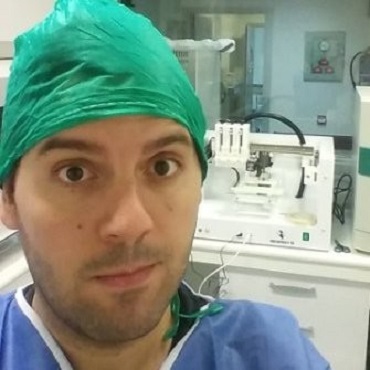Scientific Program

Jose Manuel Baena
University of Granada, Spain
Biography:
Jose Manuel Baena, research associate "Advanced therapies: differentiation, regeneration and cancer" IBIMER,CIBM, Universidad de Granada. Founder of BRECA Health Care, pioneer in 3D printed custom made implants for orthopaedic surgery, and REGEMAT 3D, the first Spanish bioprinting company. Expert in innovation, business development and internationalization, lecturer in some business schools, he is passionate about biomedicine and technology. In his free time, he is also researcher at the Biopathology and Regenerative Medicine Institute (IBIMER).
Abstract
Tissue regeneration (TR) is currently one of the most challenging biotechnology unsolved problems. Tissue engineering (TE) is a multidisciplinary science that aims at solving the problems of TR. TE could solve pathologies and improve the quality of life of billions of people around the world suffering from tissue damages. New advances in stem cell (SC) research for the regeneration of tissue injuries have opened a new promising research field. However, research carried out nowadays with two-dimensional (2D) cell cultures do not provide the expected results, as 2D cultures do not mimic the 3D structure of a living tissue.
Some of the commonly used polymers for cartilage regeneration are Poly-lactic acid (PLA) and its derivate as Poly-L-lactic acid (PLLA), Poly(glycolic acids) (PGAs) and derivate as Poly(lactic-co-glycolic acids) (PLGAs) and Poly caprolactone (PCL). All these materials can be printed using fused deposition modelling (FDM), a process in which a heated nozzle melt a thermoplastic filament and deposit it in a surface, drawing the outline and the internal filling of every layer. All these procedures use melting temperatures that decrease viability and cell survival. Research groups around the world are focusing their efforts in finding low temperature printing thermoplastics or restricted geometries that avoid the contact of the thermoplastic and cells at a higher temperature than the physiologically viable. This has mainly 2 problems; new biomaterials need a long procedure of clearance before they can be used in clinical used, and restrictions in geometries will limit the clinical application of 3D printing in TE.
- Metabolomics and Genomics
- Biotechnology & Biochemistry
- Toxicology And Metabolism
- Food & Nutritional Metabolomics
- Pharmacology & Drug development
- Metabolomics Diseases
- Metabolomics in Cancer Research
- Plant & Environmental Metabolomics
- Clinical Metabolomics and Lipidomics
- Recent Advancements in Metabolomics
- Mass Spectrometry Based Metabolomics
- Pharmacometabolomics
- Analytical Platforms in Metabolomics
- Drug Metabolism & Dietary Metabolites

